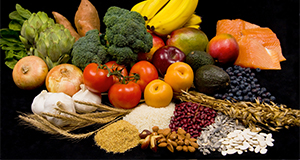Abstract
La semilla de calabaza (Cucurbita pepo L.) es alta en aceite, proteína, y ácidos grasos no saturados (AENS), y es una importante fuente de nutrición y ganancias a nivel global. Este artículo provee información a potenciales consumidores sobre el perfil nutricional y los beneficios a la salud de cultivares seleccionados de semillas de calabaza.
References
Baboli, Z.M., and A. Kordi. 2010. “Characteristics and composition of watermelon seed oil and solvent extraction parameters effects.” J. Amer. Oil Chem. Soc. 87:667–671. https://doi.org/10.1007/s11746-010-1546-5
Bavec, F., S.G. Mlakar, C. Rozman, and M. Bavec. 2007. “Oil pumpkins: Niche for organic producers.” In. J. Janick and A. Whipkey (eds.) Issues in new crops and new uses. Alexandria, VA: ASHS Press.
Baxter, G.G., K. Murphy, and A. Paech. 2012. The Potential to Produce Pumpkin Seed for Processing in North East Victoria. Rural Industries Development Corporation 11/145: 5–36.
Fruhwirth, G.O., and A. Hermetter. 2007. “Seeds and oil of the Styrian oil pumpkin: Components and biological activities.” Eur. J. Lipid Sci. Technol. 109:1128–1140. https://doi.org/10.1002/ejlt.200700105
Jarret, R. and I. Levy. 2012. “Oil and fatty acid contents in seed of Citrullus lanatus Schrad.” J. Agr. Food Chem. 60:5199–5204. https://doi.org/10.1021/jf300046f
Lelley, T., B. Loy, and M. Murkovic. 2009. “Hull-Less oil seed pumpkin.” In J. Vollmann and I. Rajcan (eds.), Oil Crops, Handbook of Plant Breeding. https://doi.org/10.1007/978-0-387-77594-4_16
Loy, J.B. 2004. “Morpho-physiological aspects of productivity and quality in squash and pumpkins (Cucurbita spp.).” Critical Reviews Plant Sci. 23:337–363. https://doi.org/10.1080/07352680490490733
Meru, G., and C. McGregor. 2014. “Quantitative trait loci and candidate genes associated with fatty acid content of watermelon seed.” J. Amer. Soc. Hort. Sci. 139:433–441. https://doi.org/10.21273/JASHS.139.4.433
Napier, T. (2009) Pumpkin Production. Primefacts for profitable, adaptive and sustainable primary industries. New South Wales Industry and Investment Primefact 964.
Nesaretnam et al. 2007. “Tocotrienol levelsin adipose tissue of benign and malignant breast lumps in patients in Malaysia. Asia. Pac.” J. Clin. Nutr. 16:498–504.
Panthee, D., V. Pantalone, D. West, A. Saxton, and C. Sams. 2005. “Quantitative trait loci for seed protein and oil concentration, and seed size in soybean.” Crop Sci. 45:2015–2022. https://doi.org/10.2135/cropsci2004.0720
Stevenson, D.G., F.J. Eller, L. Wang, J.L. Jane, T. Wang, and G.E. Inglett. 2007. “Oil and tocopherol content and composition of pumpkin seed oil in 12 cultivars.” J. Agric. Food Chem. 55:4005–4013. https://doi.org/10.1021/jf0706979
Tang, S., A. Leon, W.C. Bridges, and S.J. Knapp. 2006. “Quantitative trait loci for genetically correlated seed traits are tightly linked to branching and pericarp pigment loci in sunflower.” Crop Sci. 46:721–734. https://doi.org/10.2135/cropsci2005.0006-7
Thompson, G.R., and S.M. Grundy. 2005. “History and development of plant sterol and stanol esters for cholesterol-lowering purposes.” Am. J. Cardiol. 96: 3D–9D. https://doi.org/10.1016/j.amjcard.2005.03.013
Wassom, J.J., V. Mikkelineni, M.O. Bohn, and T.R. Rocheford. 2008. “QTL for fatty acid composition of maize kernel oil in Illinois High Oil· B73 backcross-derived lines.” Crop Sci. 48:69–78. https://doi.org/10.2135/cropsci2007.04.0208
Yermanos, D., S. Hemstreet, and M. Garber. 1967. “Inheritance of quality and quantity of seed-oil in safflower (Carthamus tinctorius L.).” Crop Sci. 7:417–422. https://doi.org/10.2135/cropsci1967.0011183X000700050004x

